A bull with borderline tendencies - but is this what customers want from their cars?
Ferruccio Lamborghini would have turned 98 over the past few days – and he truly would have had reason to celebrate. Despite a global downturn in sports car sales, the Lamborghini Aventador has a year-long waiting list, and the outgoing Lamborghini Gallardo boasts sales of over 14,000 across 11 years. The latter’s 10-cylinder successor, the Huracán, has been patiently waiting to take over. As well as bettering the performance of its forebear, the new car will also refine the balance between race-ready performance and everyday practicality, more so than any Lamborghini has done previously. A bull with borderline tendencies, then. But is this what customers want from their cars?
A superhero's supercar?
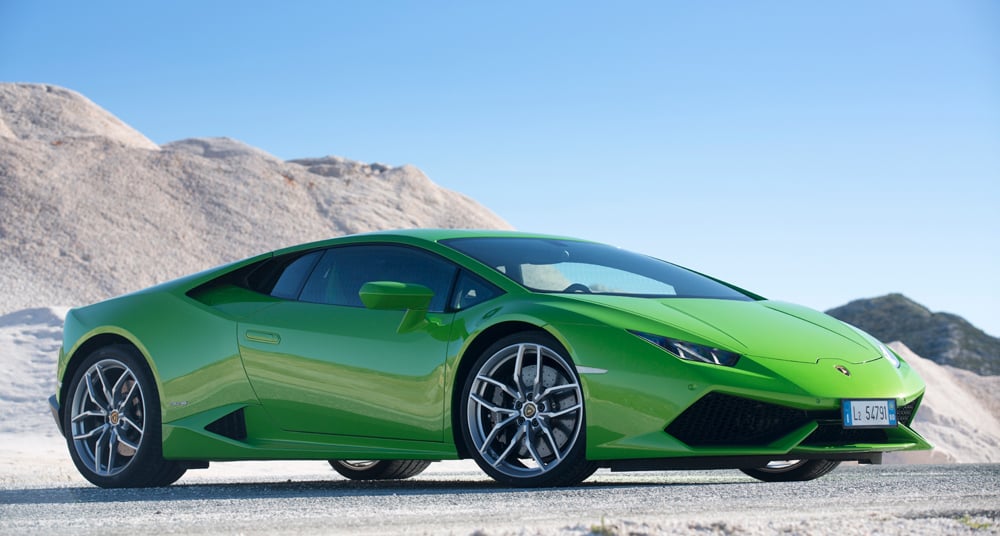
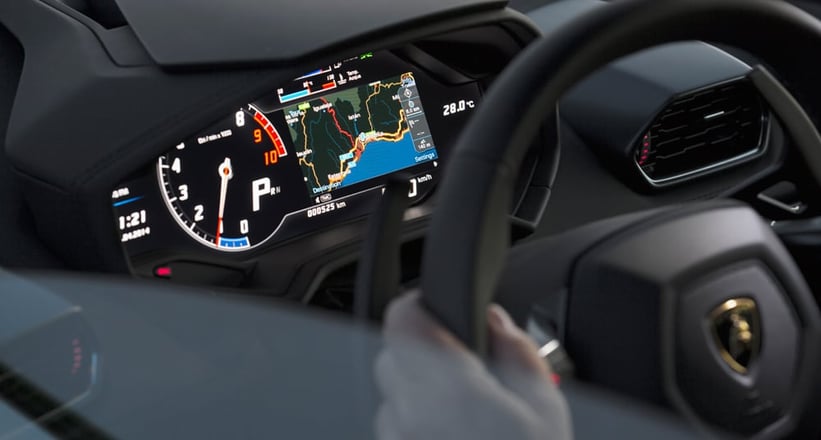
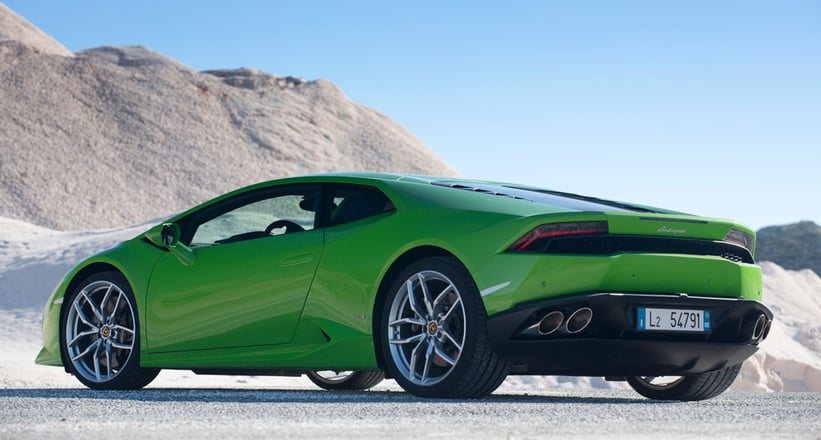
A winding mountain road in the hinterlands of Marbella; the sun burns, and there’s not a cloud in the sky. But from afar, thunder sounds. At first dull and soft, like fireworks – then becoming aggressive, the crackle of a forest fire. Suddenly, there’s a green flash tearing through the switchbacks. The dramatic appearance introduced by the Countach remains after all these years. Wide, flat, and painted in toxic green, the Huracán looks as if its muscle are straining to break free from its torso. Overall, it’s similarly proportioned to the Gallardo, but with touches such as the sharp-edged tail carried over from the limited-series Sesto Elemento. Filippo Perini’s design team has wisely followed the principles of geometric shapes and cubist overlapping, helping to differentiate it from the more rounded aesthetics of arch-rival Ferrari.
On the bridge of an interstellar interceptor
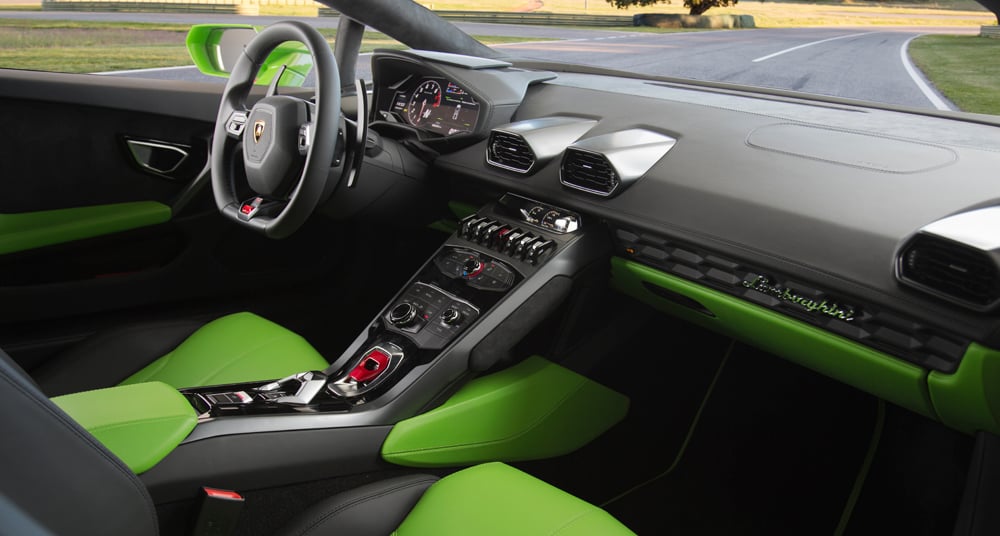
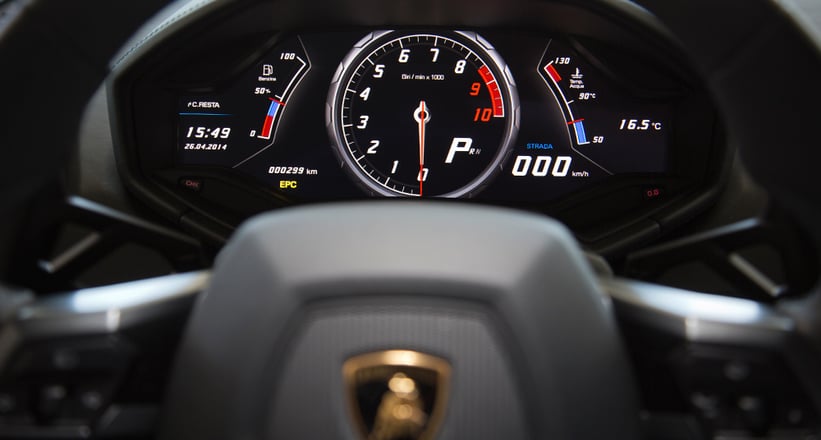
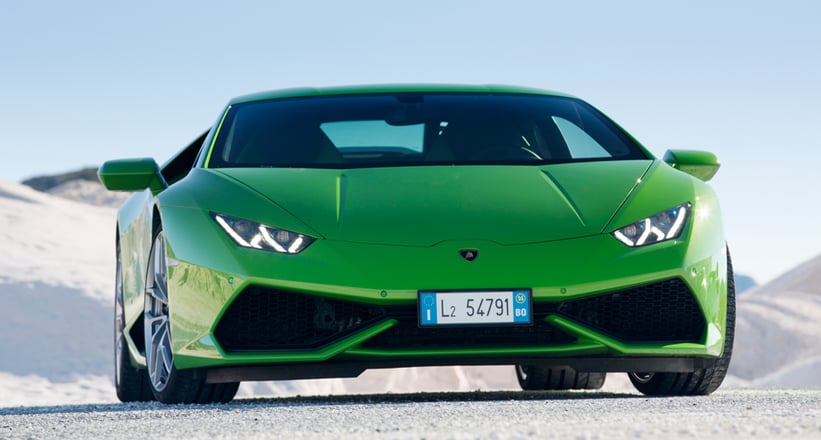
The new car’s cockpit is also successful in its homage-paying: in honour of the 1967 Lamborghini Marzal concept – given hexagonal fever by Bertone designer Marcello Gandini – the six-sided shape is a recurring motif throughout. The hexagons are arranged to form part of a futuristic flight deck, of sorts: the start button is located beneath a red signal flap, while the steering wheel hosts controls for all major weapons systems, such as indicators, headlights and wipers. A glossy, freely programmable 12-inch display showing navigation and driving information is nestled behind the angular-centred steering wheel.
Diagnosis: Tri-polar personality
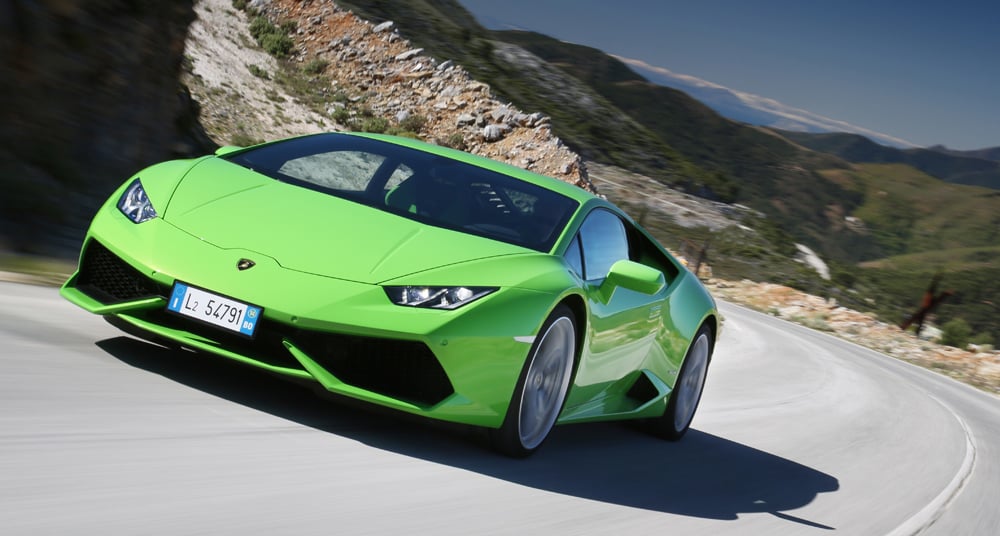
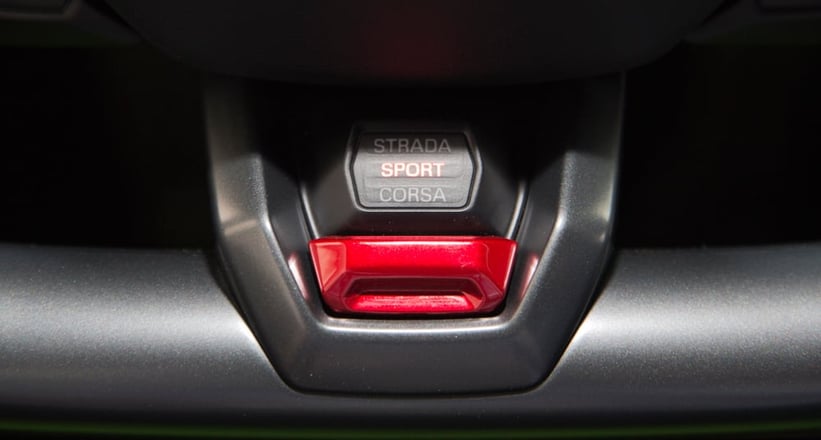
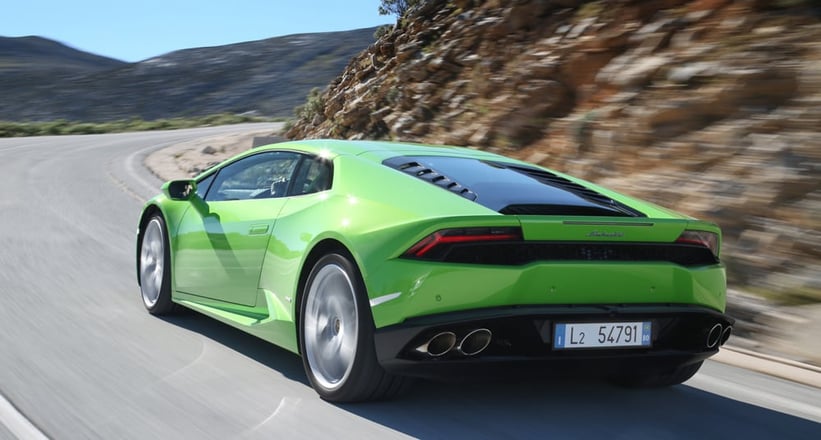
Indeed, the Huracán has benefitted from its split personality. Select the ‘Strada’ mode, and the otherwise-aggressive V10 is civilised; the car glides through the pine forests with a muted tone, the multitude of control systems ironing out pitch and roll with aplomb. A new package of sensors collects enough data to put the NSA to shame, translating its findings through ESP and all-wheel drive – the latter of which can send 100% of the 610HP to the rear wheels when required. In contrast to the stubborn Gallardo and its occasionally impetuous character, the Huracán relishes a long-distance jaunt. Ferrari, McLaren and Porsche have long embraced these gran turismo virtues as an integral part of the driving experience, and now Lamborghini has finally joined the all-star party.
Unleashing the bull
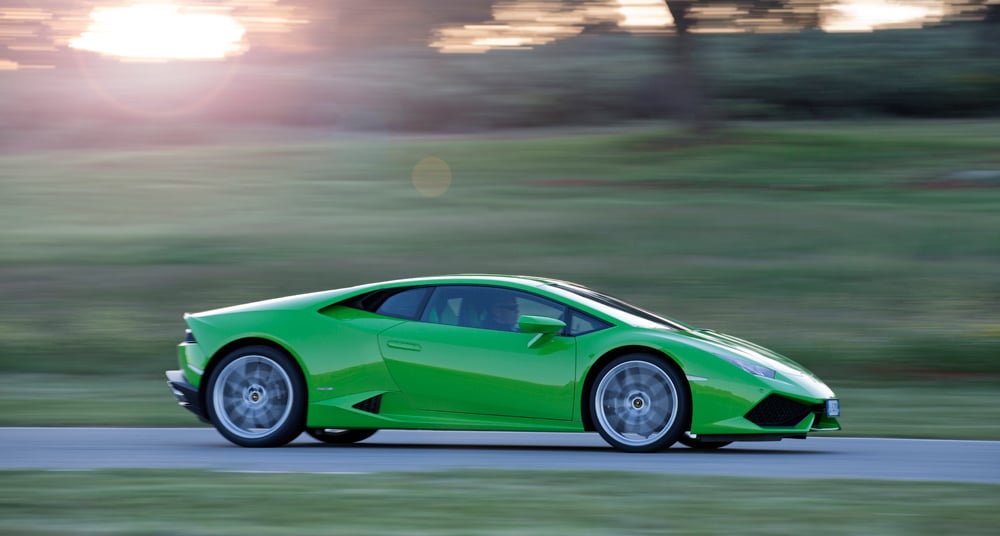
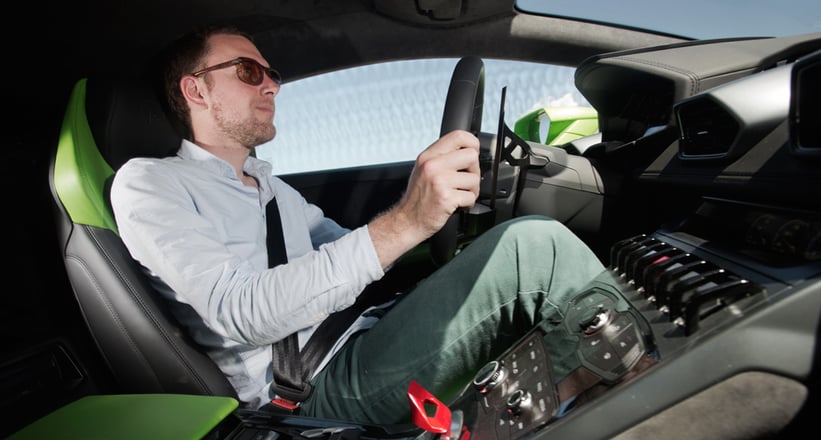
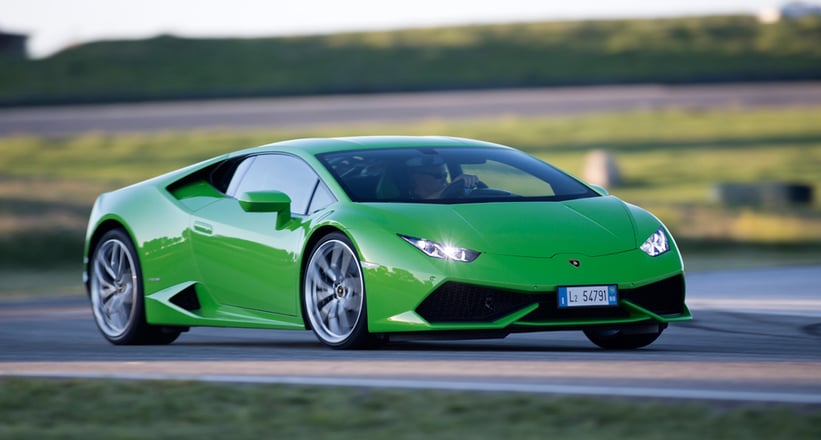
Select ‘Sport’, however, and it becomes a very different animal indeed. The V10 is allowed to release its true roar, and the accelerator becomes a super-sensitive mechanism through which to chase the storm. The steering becomes faster and meatier, pops and crackles announce every gearchange, and the magneto-rheological dampers are taut. Lamborghini’s avoidance of turbocharged downsizing pays dividends, the 5.2-litre V10 remaining true to the Sant’Agata DNA of high torque at low rpm. The super-light carbonfibre structure offsets the added weight of the new seven-speed dual-clutch box. Particularly impressive on the narrow, tight roads is the Huracán's agility: make slight corrective adjustments with your right foot, and it’ll follow the perfect line every time. Unleashing the bull has become manageable, but never monotonous – a credit to the engineers.
The track-based finale
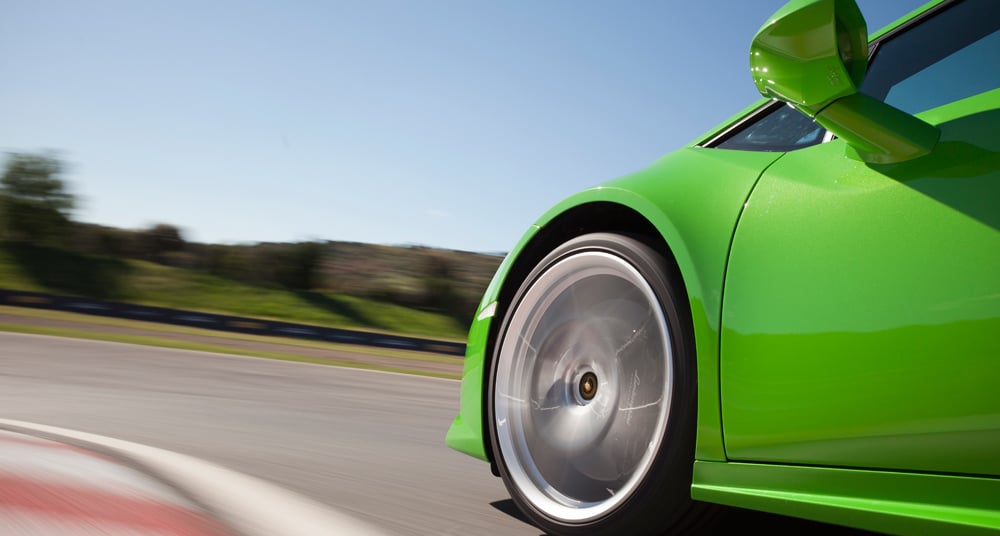

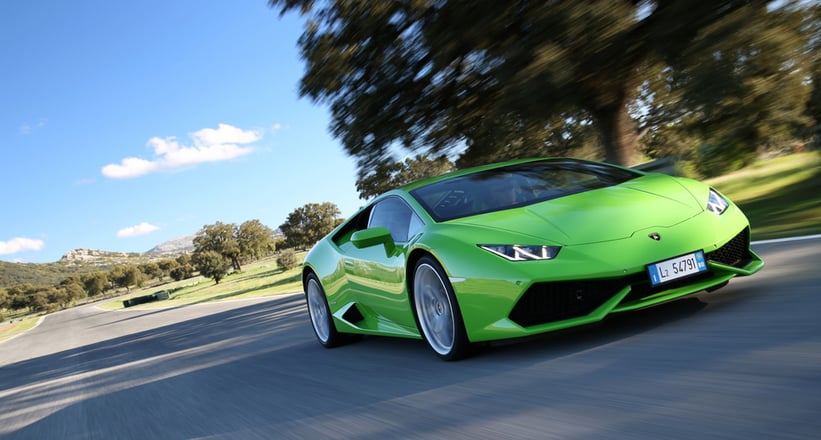
Photos: Ingo Barenschee

























